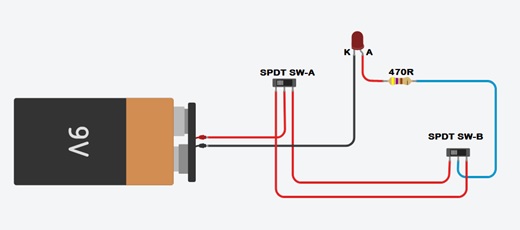Manual Control Device - Electrical Switches
A device designed to open or close a circuit under controlled conditions is called a switch.Switches are used to control the flow of current in a circuit. Current flows when the switch contacts come together. We say that the switch is closed, or contact is made. Current cannot pass through the switch when the contacts are apart. We say that the switch is open, or contact is broken.
The schematic symbols for two different types of switches are shown below:

Normally Open Push Button:
A Normally Open (NO) Push Button is a push button that, in its default state, makes no electrical contact with the circuit. Only when the button is pressed down does it make electrical contact with the circuit.

When the button is pressed down, the switch makes electrical contact and the circuit is now closed. Therefore, electricity can now flow to the other part of the circuit connecting to the push button and make the device turn or power on the respective part.
Normally Open Push buttons are the most common type of push buttons used in devices and circuits.
Normally Closed Push Button:
A Normally Closed (NC) Push Button is a push button that, in its default state, makes electrical contact with the circuit.
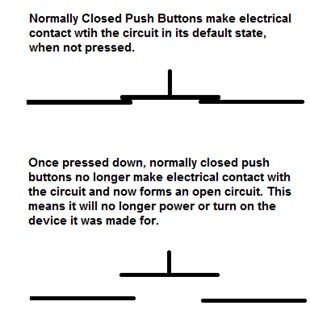
When the button is pressed down, the switch no longer makes electrical contact and the circuit is now open. Therefore, electricity can no longer flow to the other part of the circuit to turn or power on the respective part of the circuit the button was made to switch.
Normally Closed Push buttons are not the most common type of push button used; Normally Open Push Buttons are. However, they still have widespread use and application in many devices.
Commonly used switches in Electronic Projects:
Toggle Switch:
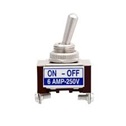
A toggle switch is a basic switch, operated by a toggle lever that can be pushed up or down. By convention, the down position is the ‘on', or ‘closed', or ‘made' position. The toggle switch in the photo has its toggle lever up. Behind the lever is a threaded dolly with a large nut. This is for mounting the switch in a circular hole cut in a panel.
Pushbuttons Switches:
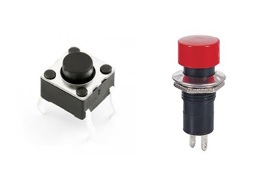
A push switch is operated by pressing a button. There are two types of action. Most switches are push-to-make (or PTM) switches. Pressing the button pushes the contacts together and the switch closes. The other type are push-to-break (or PTB) switches. The contacts are normally closed but are forced apart when the button is pressed. Either type of switch may be momentary or latching.
Slide Switch:
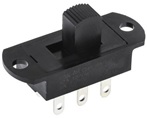
Slide switches are mechanical switches using a slider that moves (slides) from the open (off) position to the closed (on) position. Slide switches are maintained-contact switches. Maintained-contact switches stay in one state until actuated into a new state and then remain in that state until acted upon once again.
Switch Wiring Schemes
Single Pole Single Throw (SPST) Switch:
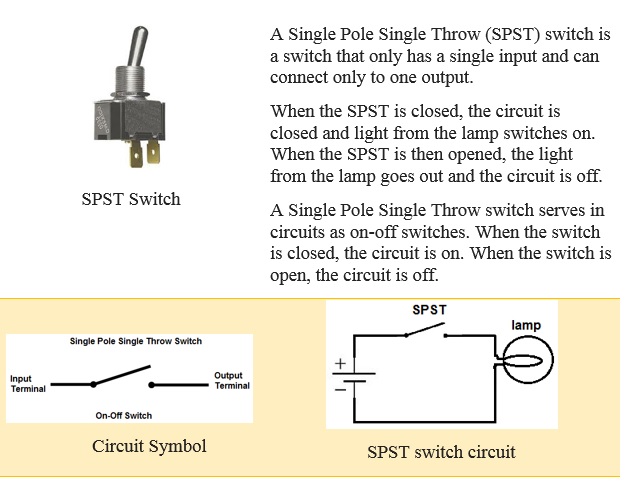
Single Pole Double Throw (SPDT) Switch:
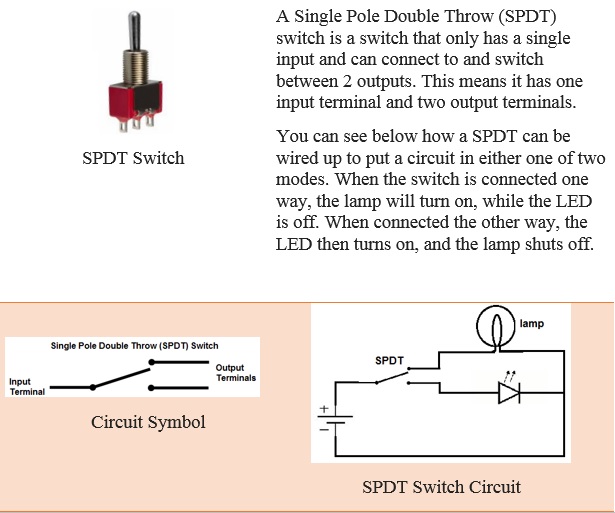
Double Pole Single Throw (DPST) Switch:
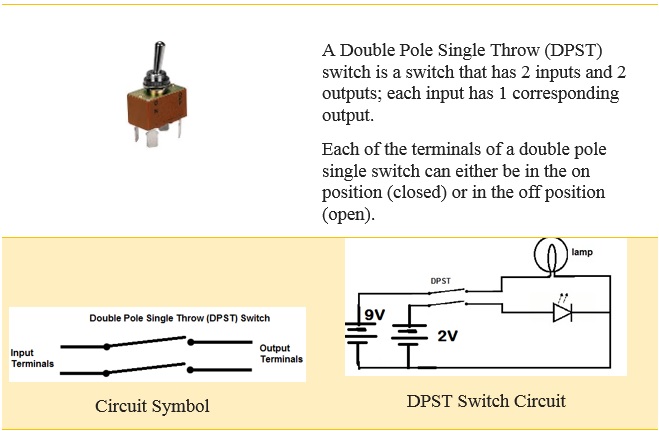
Double Pole Double Throw (DPDT) Switch:
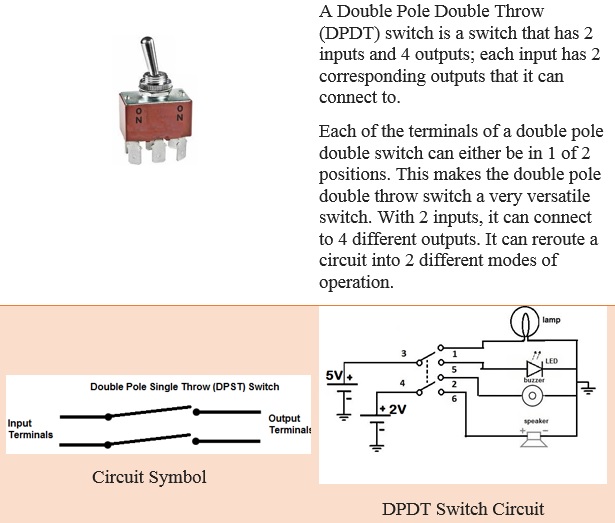
Switches in series and in parallel
are two ways of connecting two switches into a circuit:
(a) series – one after the other
(b) parallel – side by side
You can see the two versions in the following diagrams
(a) series circuit

The lamp will only light up when switch A AND switch B are closed (diagram 3).
(b) parallel circuit
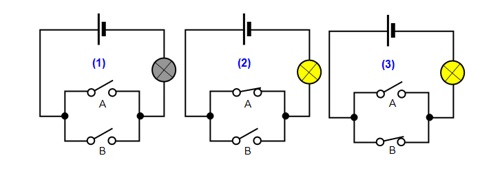
In this circuit the lamp will light up when switch A OR switch B OR both are closed.
Staircase Wiring circuit diagram & working:
Staircase wiring is a common multi-way switching or two-way light switching connection; one LED two switches wiring. Here one LED is controlled by two switches from two different positions. That is to operate the lamp from separate locations such as above or below the staircase, from inside or outside of a room, or as a two-way bed switch, etc.
